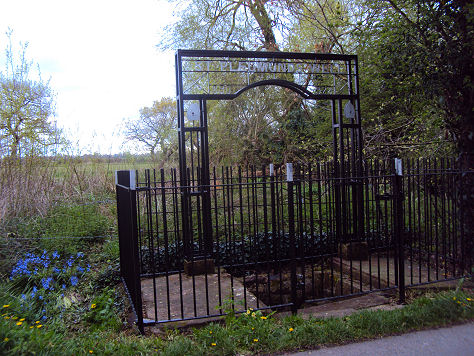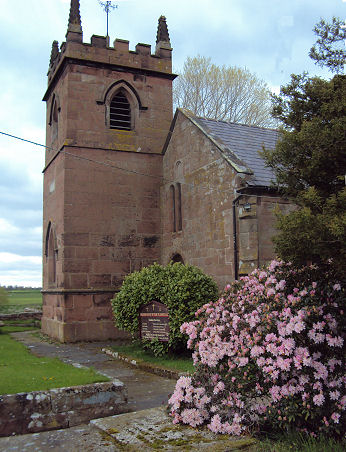St Plegmund's Well
OS grid ref:- SJ454701
St. Plegmund's Well, one of only two holy wells in west Cheshire, is situated close to St Peter's Church, Plemstall near the village of Mickle Trafford, about two miles to the east of Chester.

The well is named after Plegmund, a 9th century Archbishop of Canterbury, who prior to becoming an archbishop is reputed to have lived a hermit life nearby and to have baptised people who visited his cell at the well. The well is said to have been used by Druids before Plegmund's time. Archbishop Plegmund crowned Alfred the Great's son, Edward the Elder. He reorganised the Diocese of Winchester and created the bishoprics of Wells, Sherborne, Ramsbury and Crediton. Plegmund travelled to Rome in 908 and was the first Archbishop of Canterbury to do so for nearly 100 years. In addition to reforming the structure of the Church, Plegmund was also a notable scholar and was involved in translating many religious texts, such as Gregory the Great's Cura Pastoralis. He died on August 2, 923 at Canterbury and was buried in the cathedral. He was later canonised and the day of his death became his feast day.

The well consists of a stone lined pit with two steps down beneath this is a circular rough stone well 0.4m in diameter. Restored in 1907, it stands on the edge of a low cliff above one of the channels of the River Gowy. Baptisms were performed at the well up to the 20th century. During the late 1990s, a well dressing walk was enacted St Plegmund's feast day (2nd August). This continued until 2000, when a more formal annual well dressing event was revived.
St. Peter's Church, Plemstall

The medieval sandstone church of St Peter stands in isolation a few yards along the lane, on a hillock known as the Isle of Chester. The original church was built in the twelfth century but the present building dates mostly from the fifteenth century.
